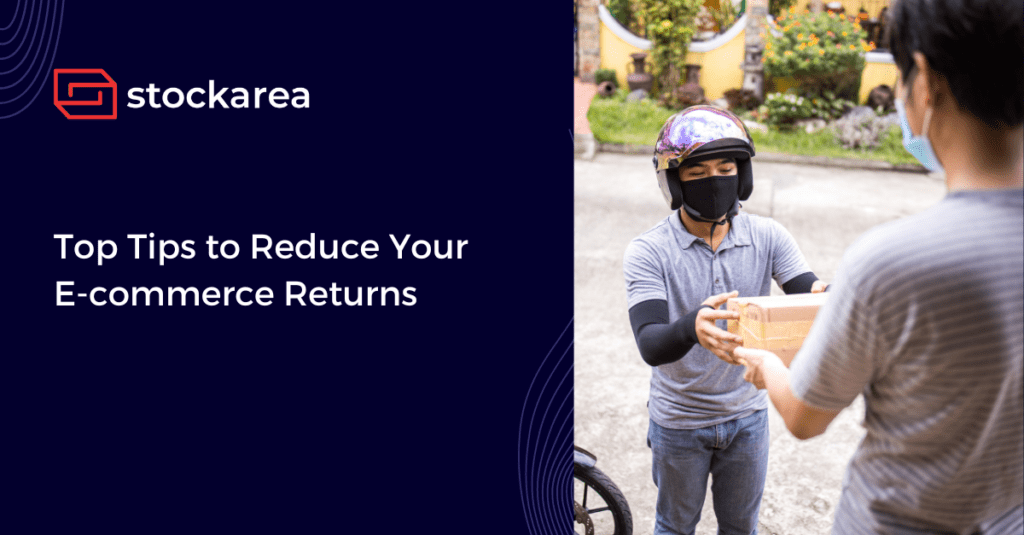Billions of people purchase products online every day, and nearly 30% of these orders are returned. Products are returned for a variety of reasons, including incorrect sizes, mismatched products, failure to match the description or image, poor quality, and faulty packaging. Returns are bad news for e-commerce businesses due to the high cost of processing a return and the loss of sales. Therefore, ecommerce businesses must take measures to reduce returns and increase their online sales.
1. Accurate Product Listing
Consumers heavily rely on the information given on the product listing page as they are unable to interact with the product physically before purchasing. Hence, customers will return the product if the product does not match the description. Accurate listing pages give consumers a better understanding of the product, thereby reducing the likelihood of returns. The three main elements of a product listing page are product images/videos, product descriptions, and product dimensions.
The product description must be precise and straightforward. It should emphasise all of the product’s key features. High-quality images/videos of the product should be captured in real time so that consumers can envision what the product will look like after purchase. Height, weight, width, and depth should accurately be included in a product’s dimensions. Customers utilise these measurements to visualise the product in real time. Thus they must be as precise as possible.
2. Encourage Reviews
Customers’ confidence in an online business can be significantly increased via reviews and will result in reduced returns. Customers are reassured about the quality of the product when they read positive and detailed reviews written by other consumers. Making the reviewing process more structured will encourage customers to leave positive reviews and ratings. When consumers get the proper insight into the products through reviews before purchasing, they are less likely to consider returning their products.
3. Prioritise Packaging
Even if the product is undamaged, many consumers will return an order if the packaging has been compromised. Customers value superior packaging and the unboxing experience; consequently, it is essential to prioritise product packaging in order to reduce the number of returns. Depending on the product, the packaging type and material should differ. For example, utilising bubble wrap or lined protective boxes for fragile products, insulated packaging for temperature-sensitive products, sustainable packaging etc., will prevent product damage and maintain the integrity of the packaging.
4. Good Return Policy
Online shoppers will only purchase a product if the online business’s return procedures are efficient and straightforward. A smart return policy should offer generous return periods. A more extended return period for a product reduces the consumer’s sense of urgency in returning the product. Consumers are able to use the products for a longer time, which improves the chances of them not initiating a return.
Customers want updates on the return order’s processing, approval, pickup, and refund. For this reason, end-to-end visibility of the return process is equally essential for customer satisfaction. The return policy must also include free returns and a quicker refund processing time.
5. Responsive Customer Support
Customers frequently return orders because they do not perform as expected or they are unaware of the product’s functionalities. In such situations, consumers frequently contact customer support. The number of returns can be minimised if the customer service agent responds quickly and effectively resolves the issue.
Introducing AI-driven chatbots into the e-commerce platform can improve the responsiveness of customer support. Chatbots respond immediately and are capable of solving recurring queries of consumers. Chatbots enhance the platform’s efficiency and consumer experience, hence decreasing the possibility of product returns.
6. Implement Real-time Visualisation
Thanks to modern technology, customers can get a close to first-hand experience with a product through real-time visualisation. Real-time visualisation uses augmented reality (AR) to generate 3D pictures of the products, allowing buyers to envision what the product would look like in their hands. 3D visualisation enables buyers to be certain about their purchases and what to expect in the real world, hence minimising the likelihood of product returns.
7. Offer Exchanges
Consumers typically return their packages only to find a similar product that meets their needs more effectively. Hence, it is preferable to give exchanges as opposed to returns. Clients value a fair exchange policy because, in most cases, they are not seeking a refund but rather high-quality products. Customers will be more likely to choose exchanges rather than refunds as a result of a customer-friendly exchange policy, fostering consumer confidence in the online business over time.
Related posts
- 9 Benefits Of Omnichannel For Your Business
- Getting Started as Meesho Supplier: Sell on Meesho in 6 Easy Steps
- E-commerce Vs Retail: Which Is Better For Shopping?
- What Is E-Commerce Fulfillment?
- Top 15 Ecommerce Trends You Should Follow In 2024
- 7 Key Benefits Of Amazon FBA For Online Sellers
- What Is A Shipping Label?
- 10 Key Benefits Of Ecommerce For Your Business
- How To Start Selling On Paytm In 2024
- B2B vs B2C: 7 Key Differences Between B2B & B2C Marketing
- 10 Tips On How To Grow Your E-Commerce Business In 2024
- 10 Best Strategies For E-commerce Shipping
- Top 10 E-commerce Pricing Strategies To Boost Business Growth
